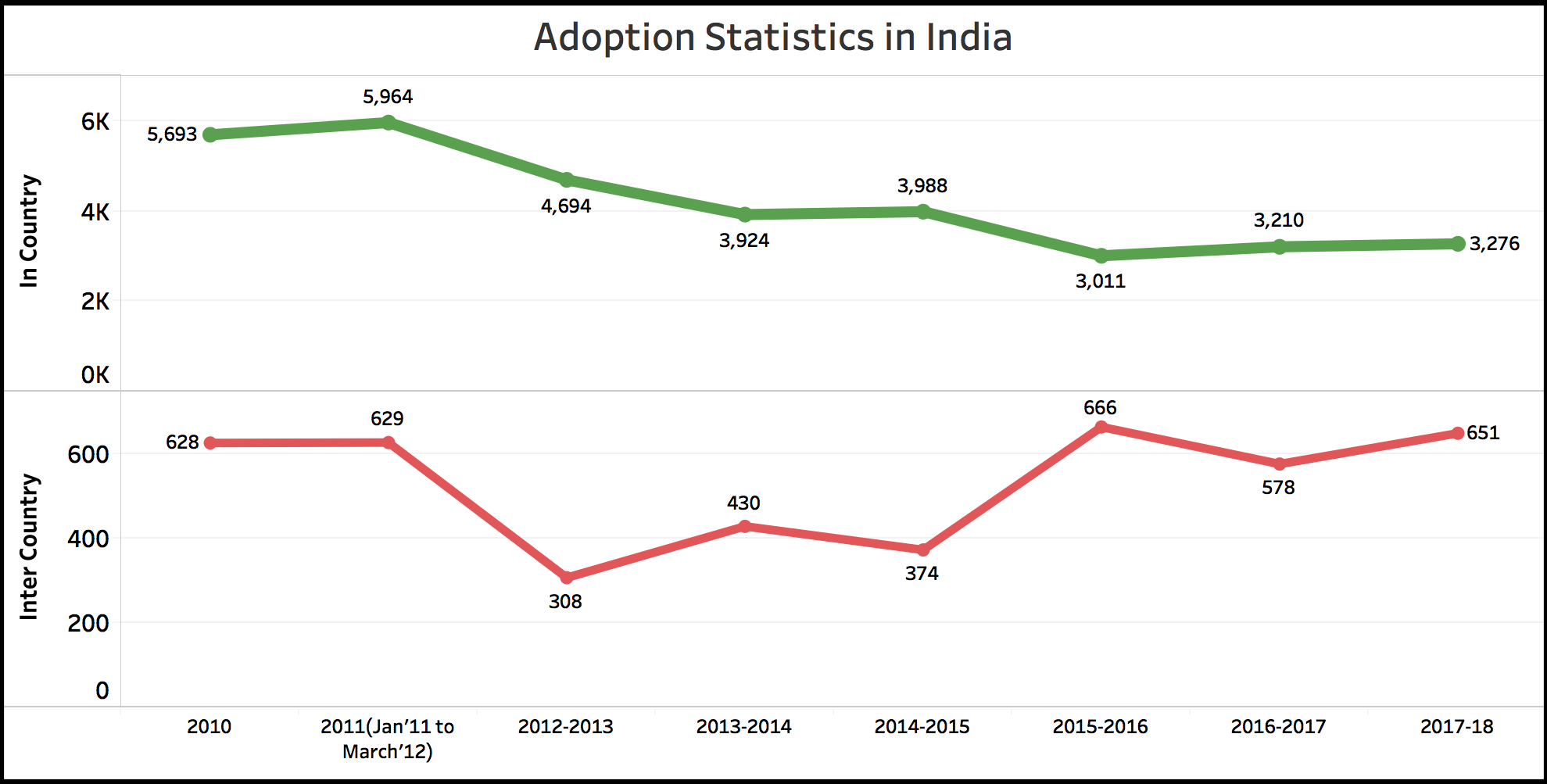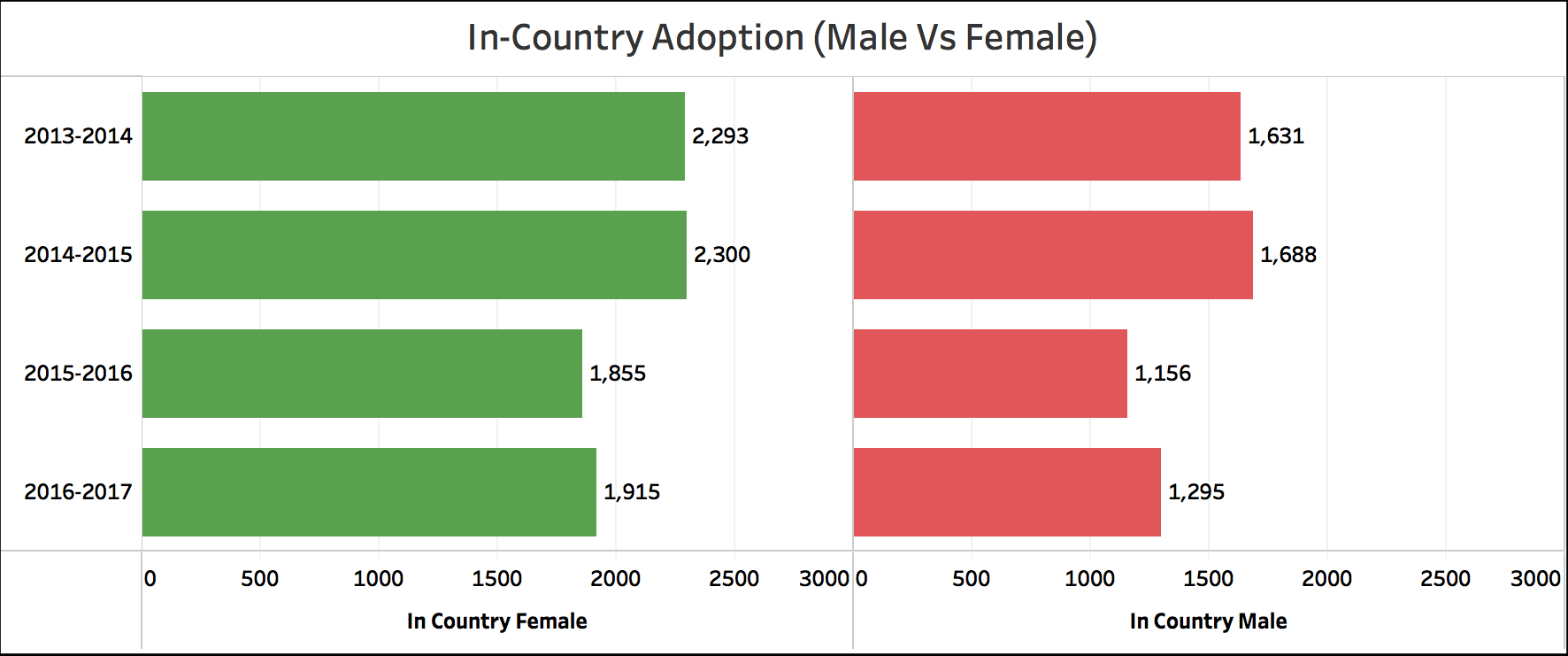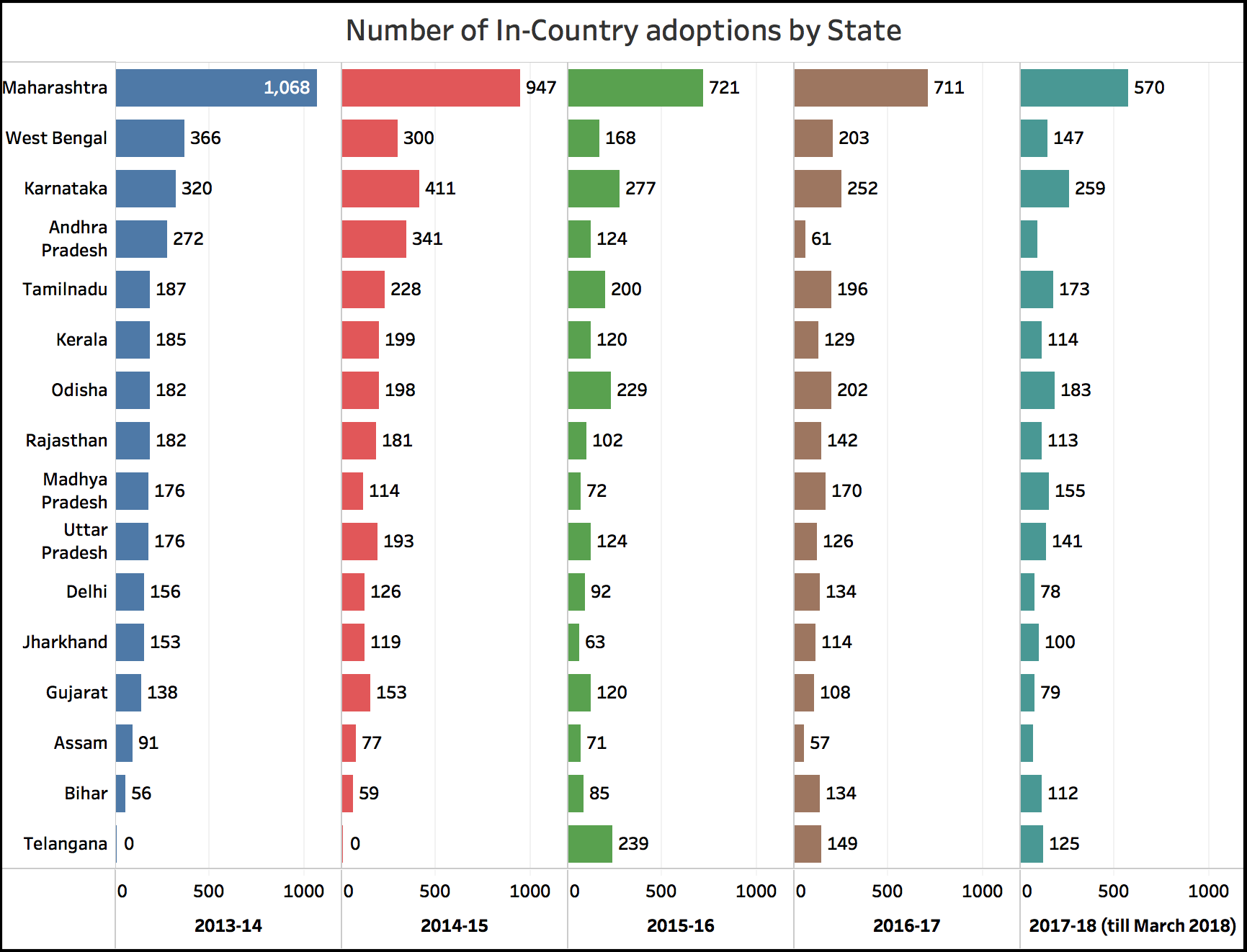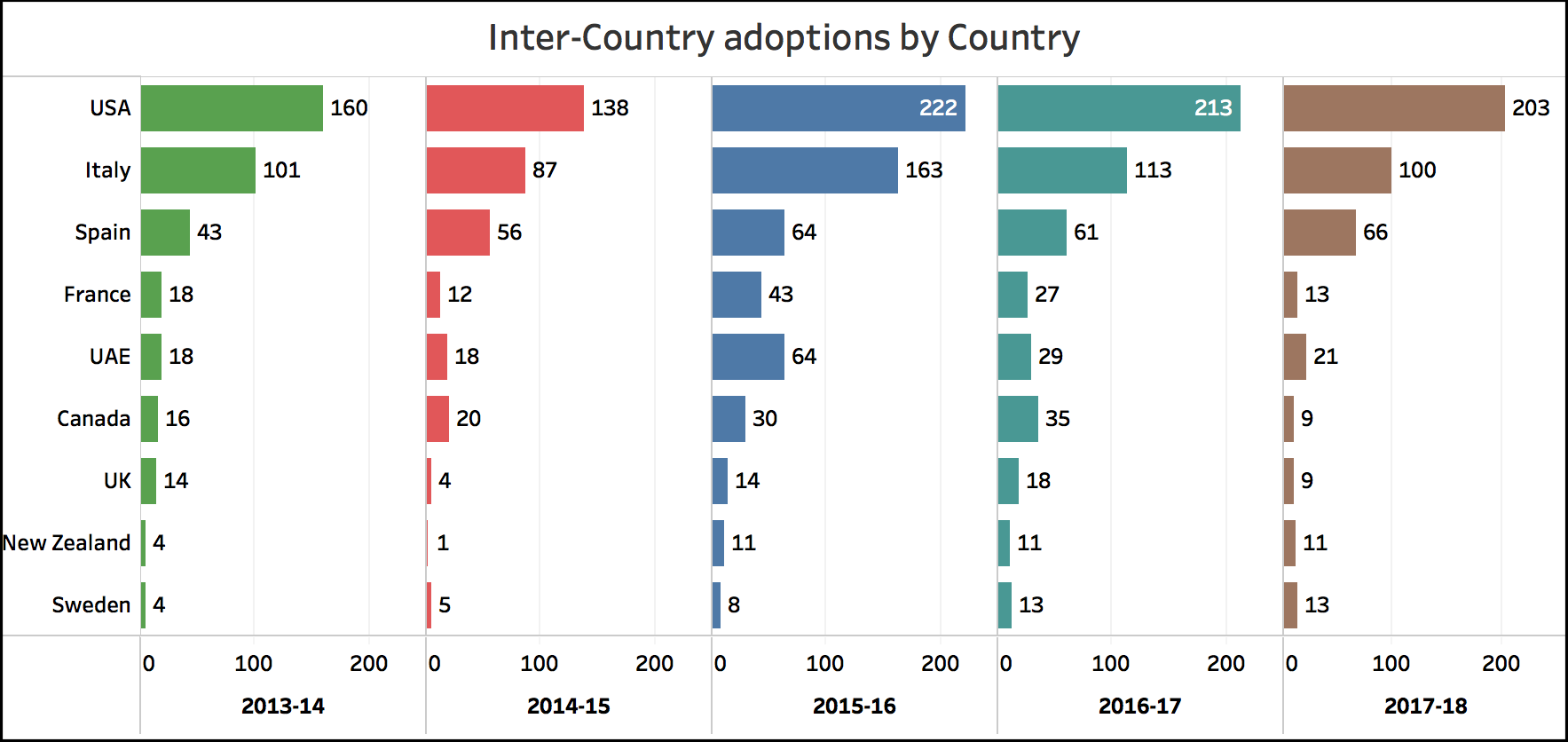[orc]While the adoption rules in India have been simplified over the years, the In-Country adoption numbers have decreased substantially (by over 40%) in the last 7 years. Most In-Country adoptions are from Maharashtra while USA is the destination of most Inter-Country adoptions.
To simplify the process of adoption of orphaned or abandoned children and bring in greater transparency in the process, the Government of India has issued the ‘Adoption Regulations 2017’, improving on the 2015 guidelines. These new regulations came into force from 16th January 2017. While one of the stated goals of the new guidelines is to expand the adoption base and streamline the adoption process, the same is yet to be realized. The number of ‘In-Country’ adoptions have gone down by over 40% in the last 7 years as per government data.
Among other things, the new regulations include
- Procedure related to adoption by relatives both within the country and abroad
- The time period available to the domestic prospective adoptive parents for matching and acceptance, after reserving the child, has been increased to twenty days from the existing fifteen days.
- 32 Schedules are annexed to the Regulations including model adoption applications to be filed in the Court etc. This is expected to address delays prevalent in obtaining the Court order.
What is the eligibility criteria for Prospective Adoptive Parents?
Central Adoption Resource Authority (CARA) is the designated nodal agency to co-ordinate the entire adoption process. CARA is also the designated Central Authority to deal with inter-country adoptions in accordance with the provisions of the Hague Convention on Inter-country Adoption, 1993, ratified by Government of India in 2003.
The new guidelines lay down the clear eligibility criteria for Prospective Adoptive Parents (PAP). The eligibility criteria include
- They should be physically, mentally and emotionally stable; financially capable; motivated to adopt a child; and should not have any life threatening medical condition
- Any prospective adoptive parent, irrespective of his marital status and whether or not he has his own biological son or daughter, can adopt a child
- Single female is eligible to adopt a child of any gender
- Single male person shall not be eligible to adopt a girl child
- In case of a couple, the consent of both spouses shall be required
- No child shall be given in adoption to a couple unless they have at least two years of stable marital relationship
- The age of prospective adoptive parents as on the date of registration shall be counted for deciding the eligibility and the eligibility of prospective adoptive parents to apply for children of different age groups

- The minimum age difference between the child and either of the prospective adoptive parents should not be less than twenty-five years
- Couples with three or more children shall not be considered for adoption
Psychological Assessment now mandatory for Inter-Country adoptions
After the infamous Sherin Mathews case, the government has now made Psychological Assessment mandatory for all registered Prospective Adoptive Parents (PAPs) including NRIs/OCIs/Foreign parents. The rules have since been modified to make the assessment mandatory even for relative adoption.
In country adoptions down by more than 40% in 7 years
As per data available on the CARA website and other data shared by the government in parliament, the In-Country adoption number has come down from 5693 in 2010 to 3276 in 2017-18. The Inter-Country adoptions have been going up and down in these 7 years. The worrying aspect is that the number of In-Country adoptions haven’t increased despite simplification of guidelines.

More female children are adopted than male
As per data with CARA, more female children are being adopted compared to the male children in each of the last 4 years as far as In-Country adoption is concerned. While 5770 male children were adopted between 2013-14 and 2016-17, 8363 female children were adopted during the same period.

The trend is more or less similar even in Inter-Country adoption. While 615 male children were adopted between 2013-14 and 2016-17, 1433 female children were adopted during the same period.
Maharashtra leads in In-Country adoptions
Among the various states, Maharashtra leads with more than 20% of the total adoptions in the country in each of the last 5 years. Eleven (11) different states have seen more than 100 adoptions in each of the last five years. Almost all the southern states are in the top ten in terms of adoption numbers.

USA, Italy & Spain account for more than half of all the Inter-Country adoptions
Individuals from the three countries of USA, Italy & Spain have accounted for at least 50% of the Inter-Country adoptions in each of the last 5 years. In fact, most of the countries in the top-half in the list of Inter-Country adoptions are from Europe. Only Canada & USA from the Americas and UAE from the Middle East are also part of this list. USA has consistently accounted for close to 1/3rd of all the Inter-Country adoptions. In the last 4 years, individuals from 35 different countries have adopted children from India.

More than 19000 Parents waiting for In-Country adoption
As per data shared by the government in the Rajya Sabha, more than 19000 Prospective Adoptive Parents (PAPs) were waiting for In-Country adoption as of March 2018 while 838 PAPs were waiting for Inter-Country adoption. At the current rate, it might take many years before the list is cleared.



3 Comments
Pingback: Adoptions In India By Foreign Nationals Grow As Special Needs Adoptions Become Easier | digg18
Pingback: Adoptions In India By Foreign Nationals Grow, Aided By Easier Norms For Special Needs Children – Site Title
Pingback: Episode 1 – Homecoming – Suno India